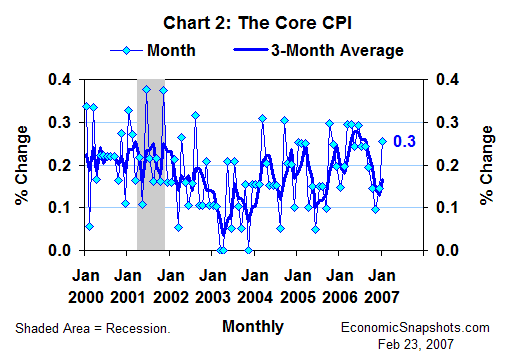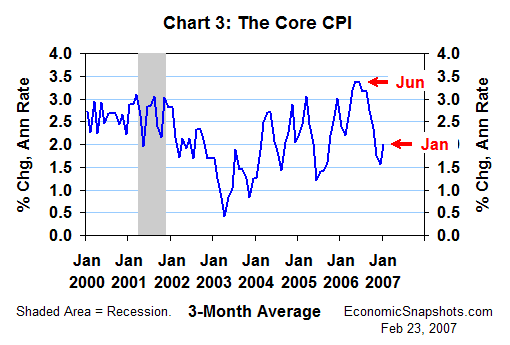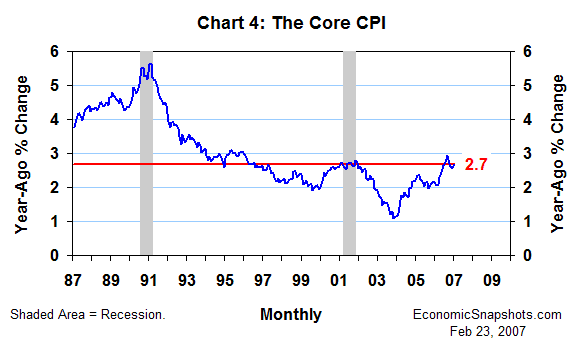
| Back to Index |
February 23, 2007 – In the data released this week, the U.S. Consumer Price Index (CPI) rose by 0.2% in January after a 0.4% December increase (Chart 1).

Slower growth in energy prices (especially gasoline prices) can more than account for the overall slowing in January CPI growth. Excluding energy, the CPI rose by 0.3% in January. That’s 0.2 percentage points faster than December’s 0.1% increase.
Growth in the closely-watched core CPI (excluding food and energy prices) also accelerated to 0.3% in January after a 0.1% December rise (Chart 2).

For the three months through January, the core CPI rose at a 2% average annual rate (Chart 3). That’s 0.4 percentage points faster than its 1.6% average increase for the three months through December, but still 1.4 percentage points less than its 3.4% three-month trend in May and June last year. Thus, despite January’s setback, these data continue to show promise of a slowing trend in core inflation.

To date, however, this slowing in core CPI growth has not been big enough to have much impact on the broader twelve-month inflation rate. The core CPI rose by 2.7% in January, compared to the same month last year (Chart 4). That’s only 0.2 percentage points less than September’s 2.9% peak. Thus, these data stop short of providing clear proof of a sustained slowing in core inflation.

As Fed Chairman Bernanke reminded us in his testimony to Congress last week, the FOMC’s current wait-and-see monetary policy strategy depends importantly on FOMC members’ belief that the trend in core inflation is currently in the process of slowing to a more acceptable pace. “The monthly data are noisy, however, and it will consequently be some time before we can be confident that underlying inflation is moderating as anticipated.” Thus, barring a major setback in the inflation indicators, the FOMC is evidently prepared to be patient.
Bottom line: These data support the outlook for no change in U.S. monetary policy.
Suzanne Rizzo
Note: The January CPI data included the regular annual revisions to the seasonal adjustment factors. These changes affected the seasonally-adjusted CPI data from January 2002 onward. Their impact on total and core CPI growth was small.